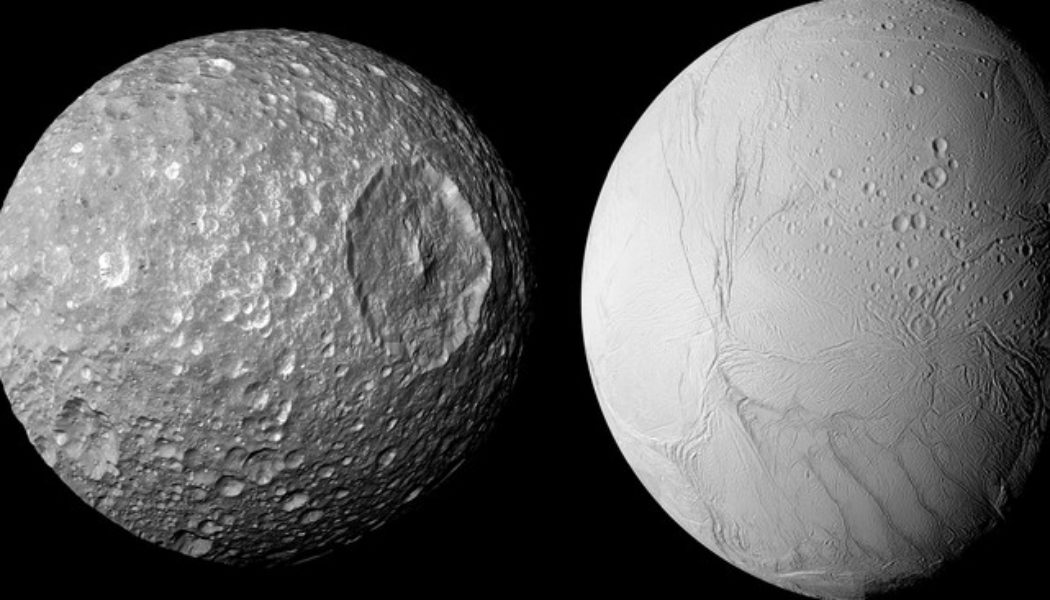
During a mission to discover whether or not Saturn’s moon Mimas was geologically dead, researchers discovered something far more surprising: “compelling evidence” of an underground ocean buried beneath the surface of the Death Star-like moon. Mimas, the researchers say, might be a “‘stealth’ ocean world,” a finding that, if verified, would further expand the number of potentially habitable places in our solar system.
Icy moons with evidence of subsurface oceans have garnered a lot of attention from scientists lately. The two best known examples in our solar system, Saturn’s Enceladus and Jupiter’s Europa, are considered prime places to search for alien life. Enceladus, in particular, appears to have most of the ingredients needed to sustain life in its seawater, which spews out of geysers near the moon’s South Pole.
But while the surfaces of both Europa and Enceladus show signs of geologic activity, suggesting an internal heat source that allows liquid water to exist, the surface of Mimas is heavily cratered, leading Southwest Research Institute (SwRI) scientist Alyssa Rhoden to suspect it was “just a frozen block of ice,” according to a press release.
However, Rhoden now thinks Mimas’s cratered-like appearance kept an ocean hidden. In research published earlier this month in the journal Icarus, Rhoden and her colleague Matthew Walker of the Planetary Science Institute in Tucson, Arizona, show that tiny wobbles, or “librations” in the moon’s orbit detected by NASA’s Cassini spacecraft can be explained by gravitational interactions with Saturn that produce enough heat maintain a liquid ocean beneath a thick icy shell. A model developed by the team suggests that icy shell is 14 to 20 miles thick.
The findings suggest Mimas is a “compelling target for further investigation,” Rhoden said in a release. Studying the moon’s potential to support an ocean, she says, could help researchers understand the prevalence of ocean moons at even more distant and poorly-explored locales, like Uranus.








